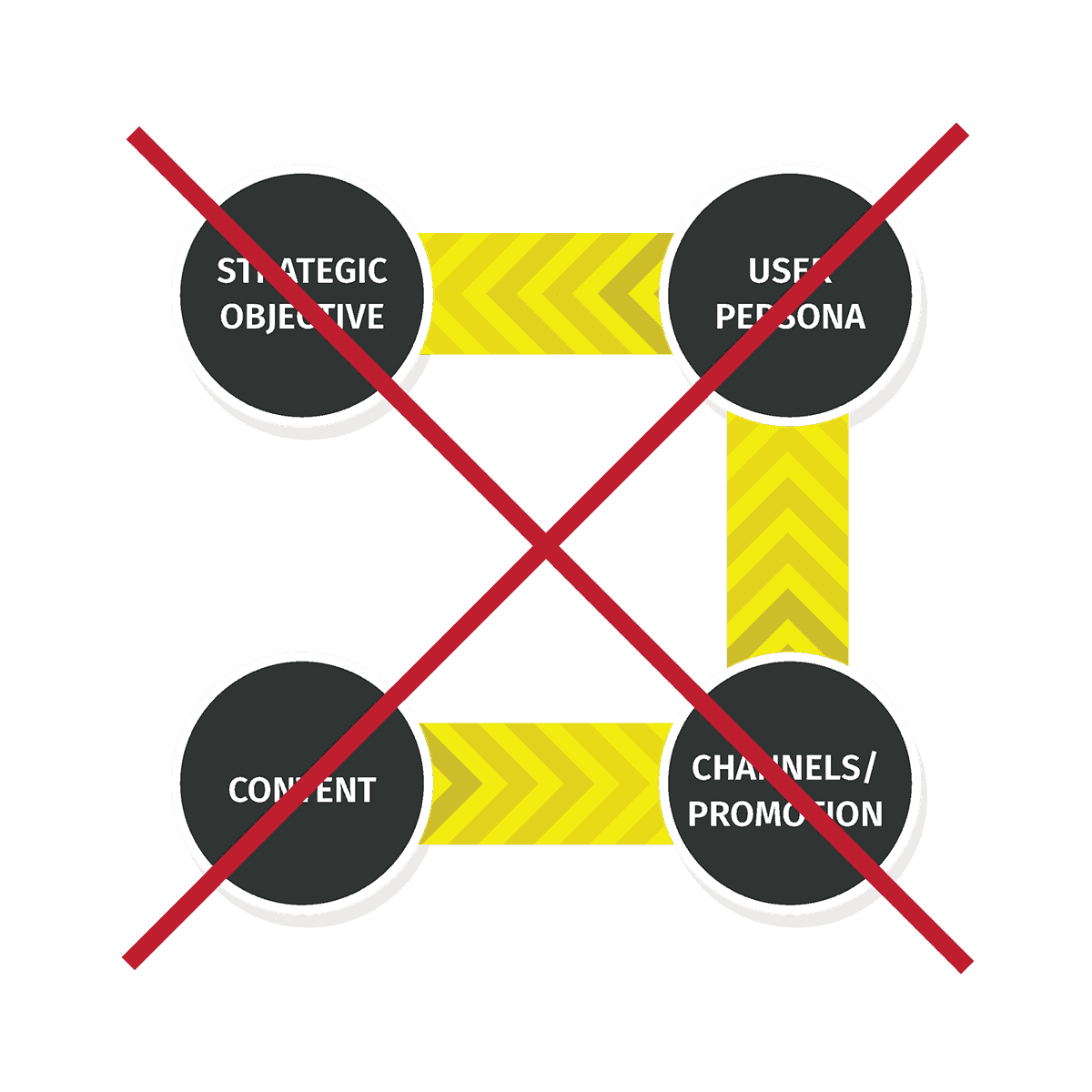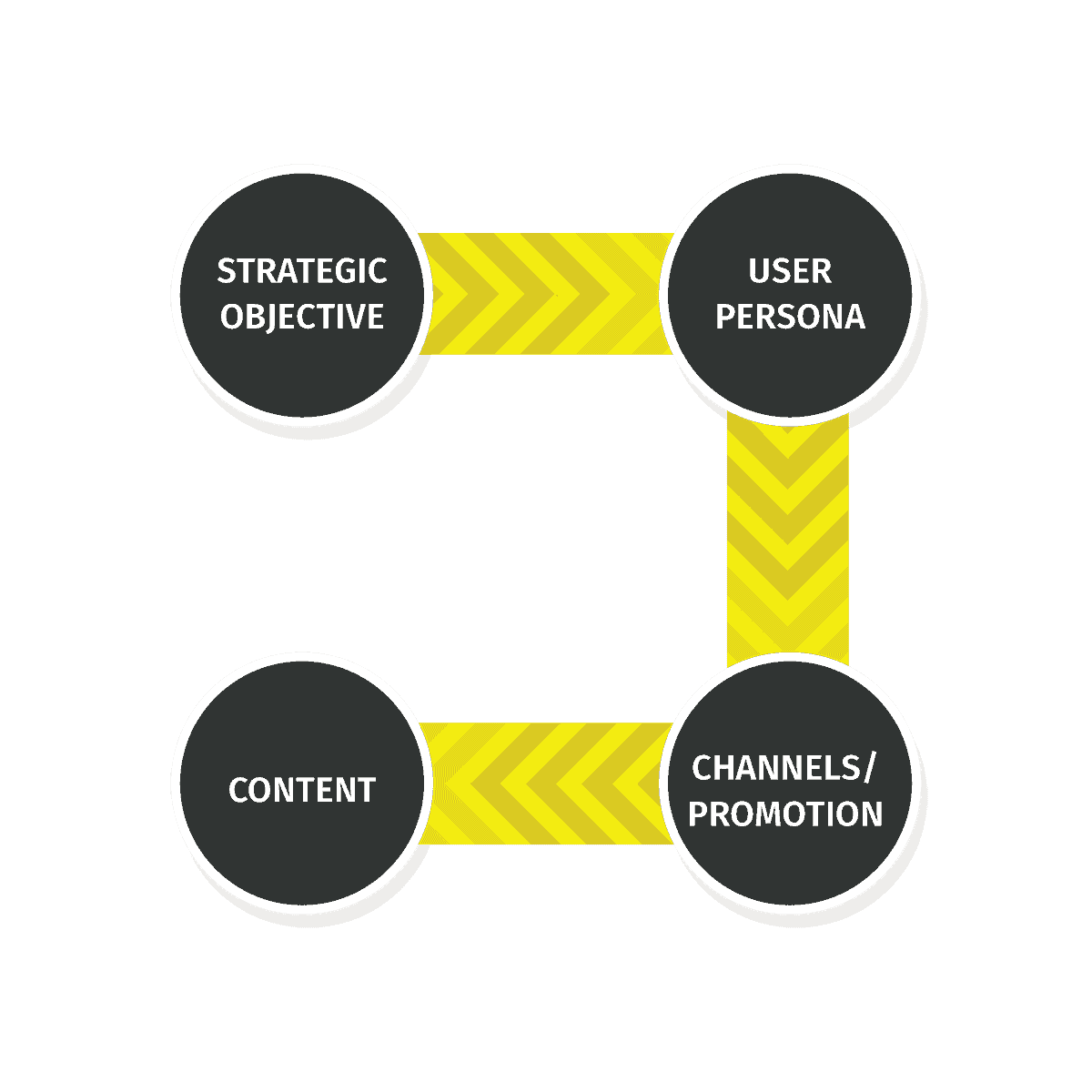Many companies invest thousands of dollars in creating incredible content for their website, blog, or social media accounts. They labor over the words and images, adding in detail and testing headlines.
But they never see results. It just keeps costing them money.
Why?
It’s because great storytelling–great content–isn’t all you need to be successful at content marketing. If your brand tells the world’s best stories, it won’t translate into actual results unless you invest in a full strategy for how to create value with that content.
Telling great stories is a huge part of effective content marketing. No argument there.
But the “content is king” mantra has transformed what should be a business-focused, strategic activity into a romanticized cliche. Too many people focus all of their energy on being “storytellers” and forget the other aspects of content marketing that makes it actually worth doing.
Saying content marketing is all about storytelling is a really sweet sentiment–it surely sounds more artful and culturally relevant than simply being a “content marketer.”
But it doesn’t tell the whole story. (See what I did there?)
We can’t all be storytellers.
Because storytelling is only part of what makes content marketing successful.
Great content isn’t enough
Many people shout about the need for marketers to create epic–”10x”–content that’s bigger, stronger, faster, and sexier than all other content that came before it. And there’s some truth to that. There’s no doubt that this kind of content is great (we need more quality content and less bullshit).
Creating kick-ass content is a nonstarter to succeeding in content marketing. It’s essential to success.
But, if you publish an epic blog post and no one reads it, what the hell’s the point?
You need to do more than just create great content.
We’ve all seen content that spreads like wildfire, shared all over the internet, generating millions of pageviews and overnight fame for the writer or publisher.
Is it because it’s the greatest content in the world and simply being rewarded for its brilliance?
Does great content always lead to success?
The answer to both questions is no.
Content that is successful at driving traffic, generating leads, or building brand awareness does not exist in a vacuum. It’s almost always part of a much bigger machine behind the scenes–one that you likely don’t see.

Behind almost every great piece of content is a massive push to make it not just a great story, but a valuable asset for the company that is creating it. This process includes many different tactics, but it can be essentially broken down into three main components.
1. Content marketing strategy
How will your content be deployed to help generate actual results? One of the most-often overlooked pieces of content marketing is how to market the content you create.
Chances are you don’t have a massive social media following to a huge email list. So how will you get that content out into the world and in front of the right people? Your marketing plan can’t be as simple as just posting it on Twitter or Facebook.
Just like with any other form of marketing, you cannot expect the creative to do the work on its own. You need to back your content with a solid promotional strategy.
2. Content distribution
Who are the right people to see your content?
How will they come in contact with it?
If you leave the distribution of your content to chance–“if it’s good, people will find it”–then you’re setting yourself up for failure. You need to identify specific distribution tactics that you can employ in order to see that your content is put in front of the right people. This may involve partnering with other people in your industry (influencers) or some other strategy for pushing your content out through various channels.
But in order to grow your business, you need a plan for reaching new audiences.
3. Content amplification
Once your content is out in the world, you want it to reach as many people as possible. This is what’s called content amplification. And it doesn’t happen by magic. It takes planning and coordination in order to maximize the reach of any single piece.
Amplification may sometimes come in the form of paid promotion–but it doesn’t have to.
There are many ways to amplify the reach of your content to create more value than what you can achieve by simply promoting it through your immediate channels (Facebook, Twitter, email, etc).
The key is understanding which tactics will be most effective within your industry and tapping into those opportunities.
There’s much overlap between these different aspects. But one thing is true for all of them–you can’t just dump content into the world and expect it to work miracles.
You need to be prepared to support each piece with a robust marketing, distribution, and amplification strategy.
And you also need to be thinking strategically about the content that you create in the first place.
You need strategic content
Ultimately, incredible content is only valuable if it’s the right content for the right people.
And this is why you need to start with a strategy–not a story. Your strategy should inform your content, your content cannot drive the strategy.
This is something that many companies get wrong about content marketing.
Because they’ve been inundated with messages about the importance of storytelling, they start by trying to identify stories, tell those stories, and then force strategy around it.

But, that’s exactly backward.
Your strategy should dictate the kind of stories that you tell, to which parts of your audience, and through which channels. Those stories should align your business goals with the needs of your prospective buyer in order to provide value for them and create value for your business.

You can’t work backward and expect to piece together a strategy from a handful of content ideas.
Again, we see how storytelling on its own is simply not enough. It doesn’t provide what we need to see actual results from the content we are creating.
Everything you produce must work within a larger framework.
Storytelling can play a huge role as part of your content marketing strategy. But telling stories is not a strategy in and of itself. You need direction that ties your stories to the people you are trying to reach and the objective you’re trying to achieve.
Someone has to keep score
Lastly, one of the most important aspects of effective content marketing is measurement.
Just like with all forms of marketing, we should always push to close the loop. This means keeping track of what we’re doing and what effect it’s having. Someone’s got to keep score.
You need clear data that tells you what you’re doing well and what’s not producing results–and you need to respond to that feedback to improve outcomes.
Is this sh*t actually working?
For content marketing to be really successful, you should be looking to develop an iterative feedback loop, where outcome data is reviewed internally and steers your strategy and execution.
In order to do that, you need a team that can set goals, analyze data, measure results, and make changes.
This means that having a bunch of freelance writers cranking out blog posts won’t get you to where you need to be. You need diverse skills on your team, driving not just the creative aspects (storytelling), but also the strategic and analytical parts of the process.
These are all essential to creating a robust and effective content marketing program.
Full-stack content marketing teams
Whether you work with an agency, an internal team, or a group of freelancers, it’s incredibly important for you to approach content marketing with a full-stack team that can handle all of the different aspects that are required for success.
If you just throw a writer at your blog and hope for the best, you’ll be pretty disappointed.
At Optimist, we structure our teams to include people with various skill sets and experience. We put emphasis on strategy, with dedicated roles specifically for planning and managing content. Then we have creatives–writers, editors, designers–that create great content and tell great stories. We also have admin help to push the content out into the world. Again, there’s no point in creating incredible content if it’s just going to sit on your blog, collecting dust.
Our base content marketing team consists of 5 people:
- Strategy director – Strategy/account management
- Content strategist – Content planning and management
- Writer/editor – Copywriting and editing
- Designer – Design and art direction
- Marketing admin – Outreach, promotion, and distribution
In addition to this, we add on other resources where necessary (extra writing/editing help, developers for technical content, etc). Taken together, this is the basis for an effective content marketing team. And it takes more than just great storytellers.
Read more about how we work with clients.
At the end of the day, we can’t all be storytellers because we need more than just great stories to win with content marketing.
If you’re going to invest in content, consider what it really takes to achieve the results you want.
You’ll quickly realize that it’s not as simple as just telling stories.
Get more kick-ass content from us
Subscribe to our email list and get regular updates.
No spam or BS. Just great, insightful articles.